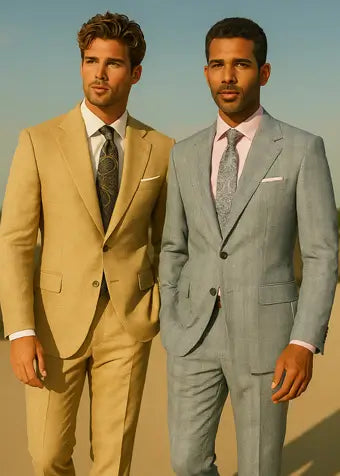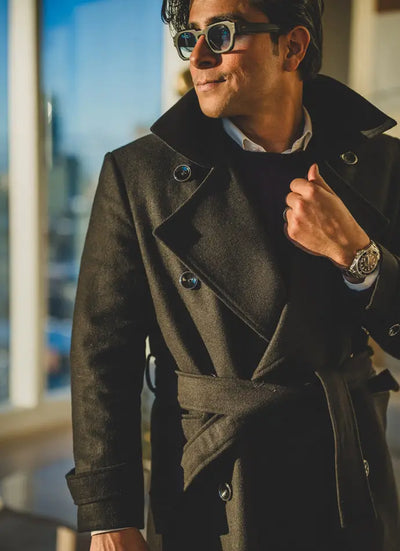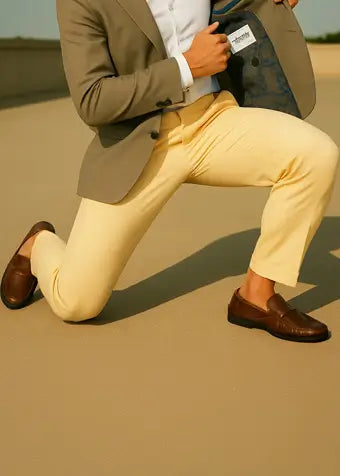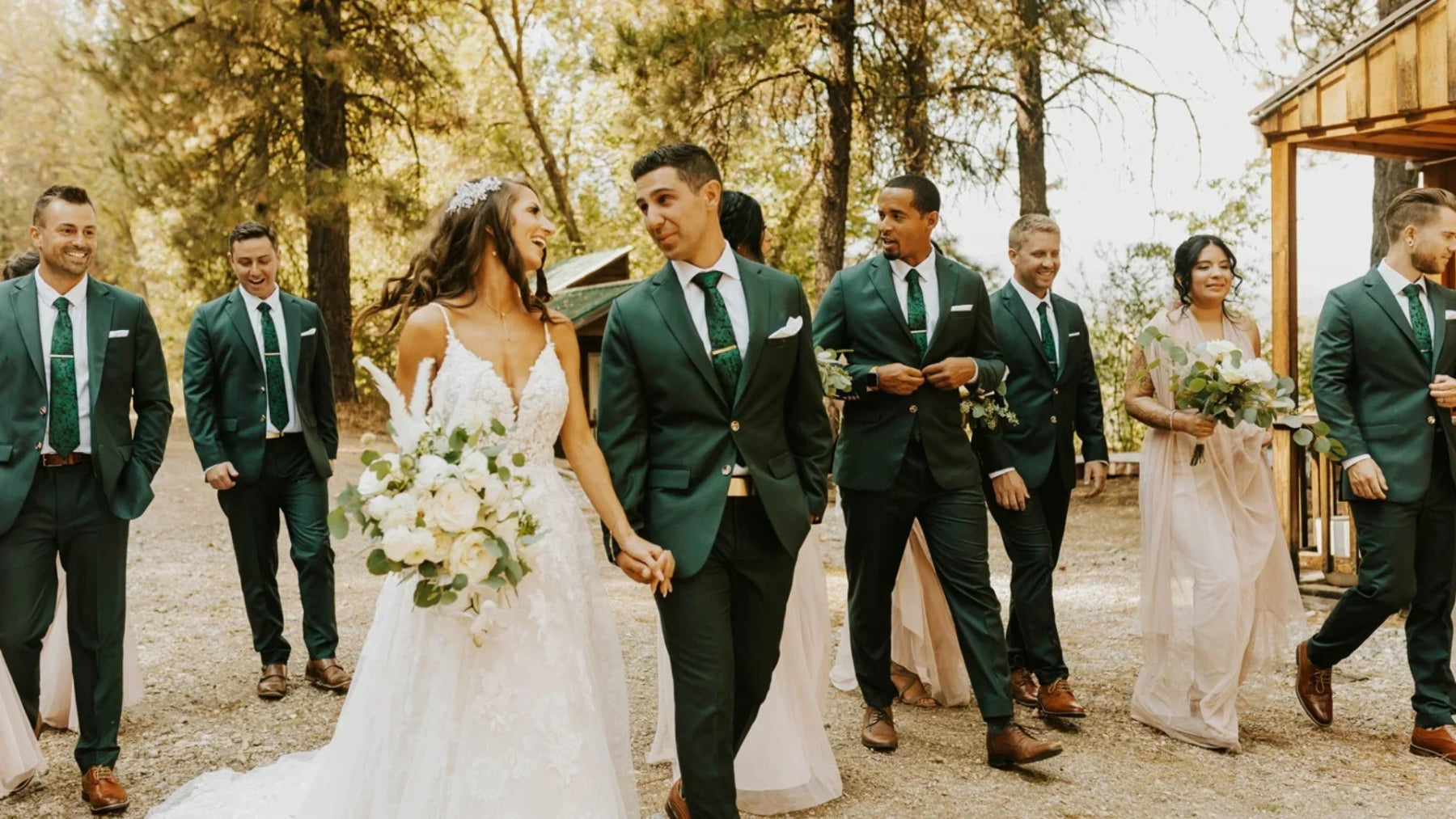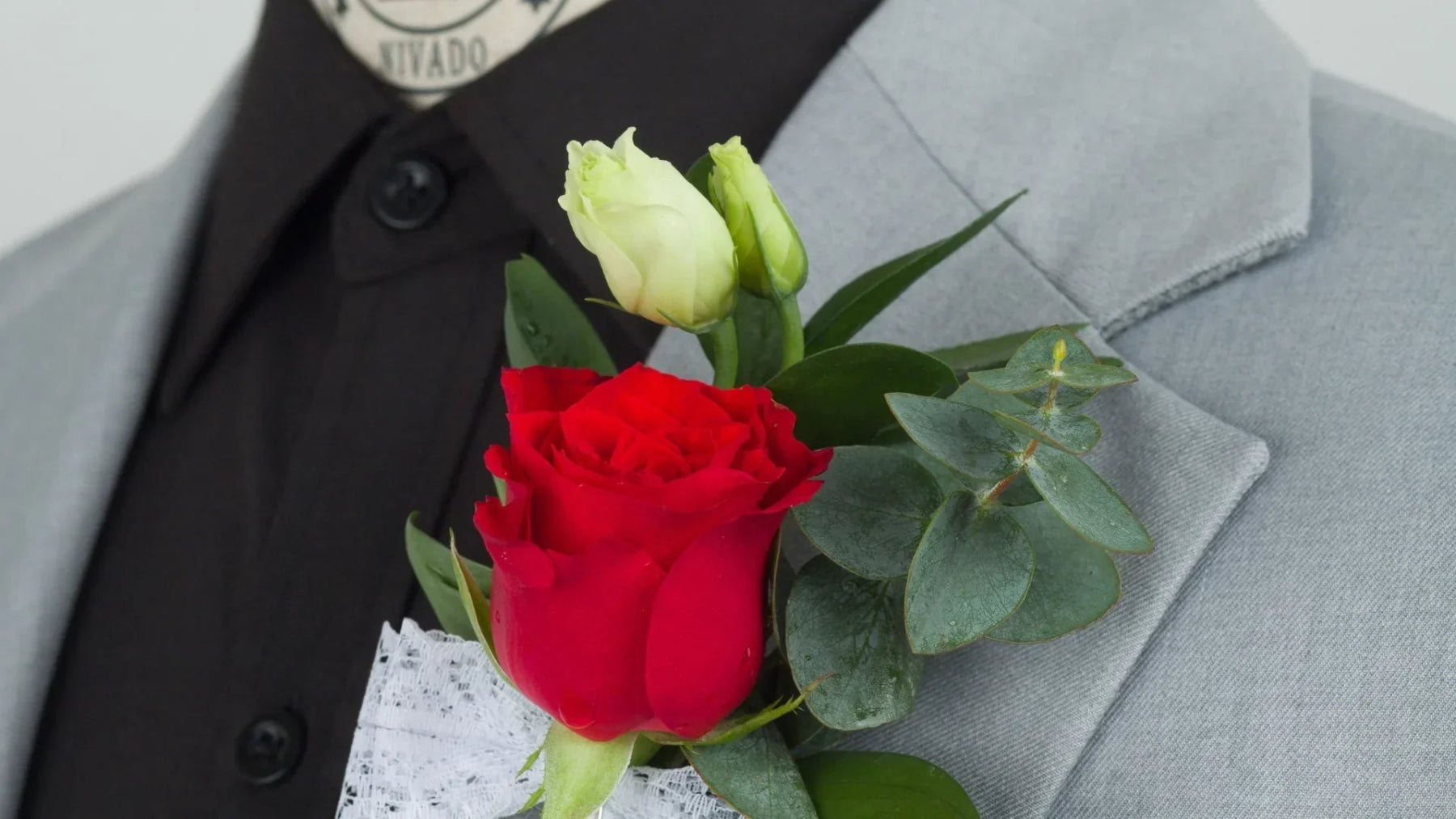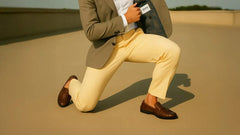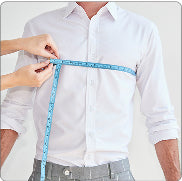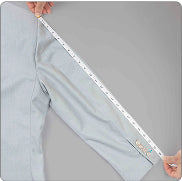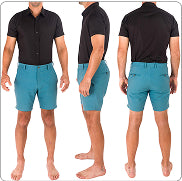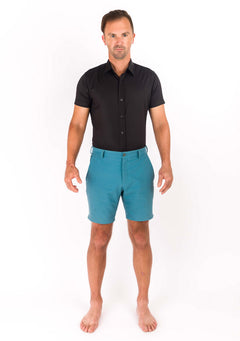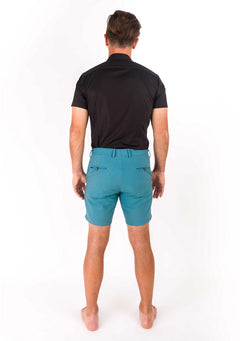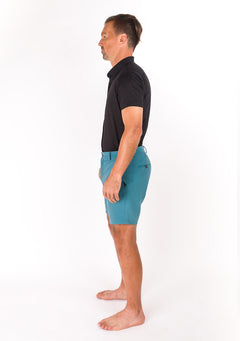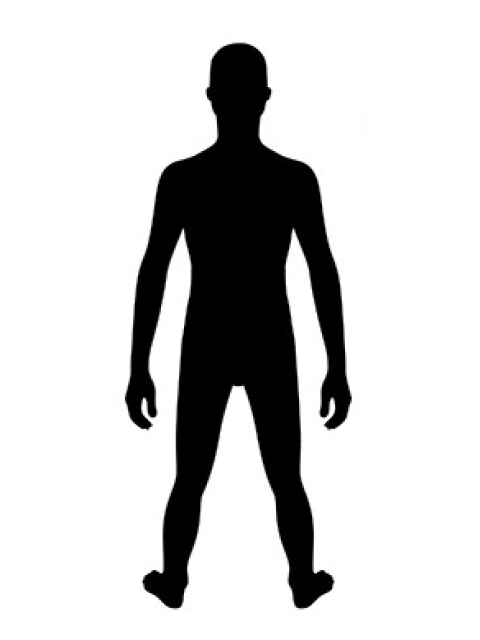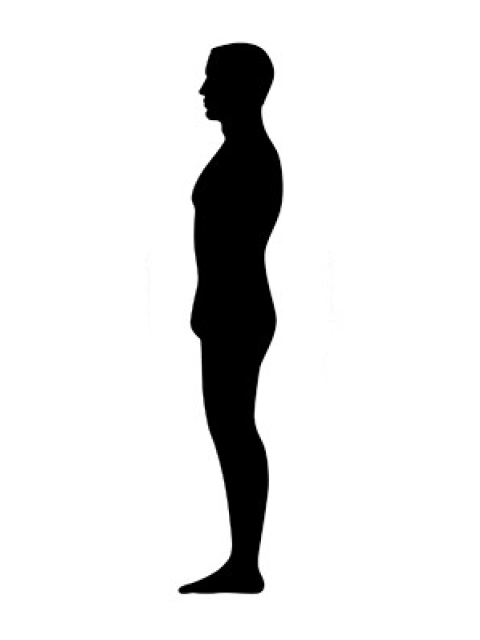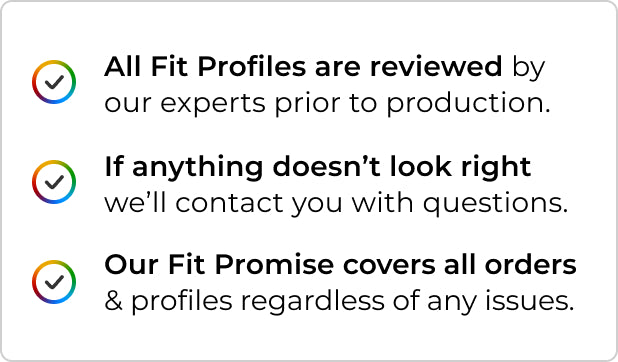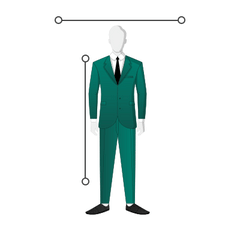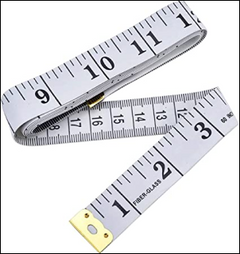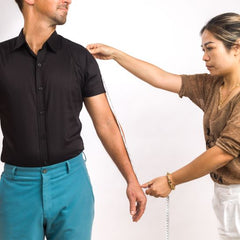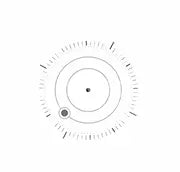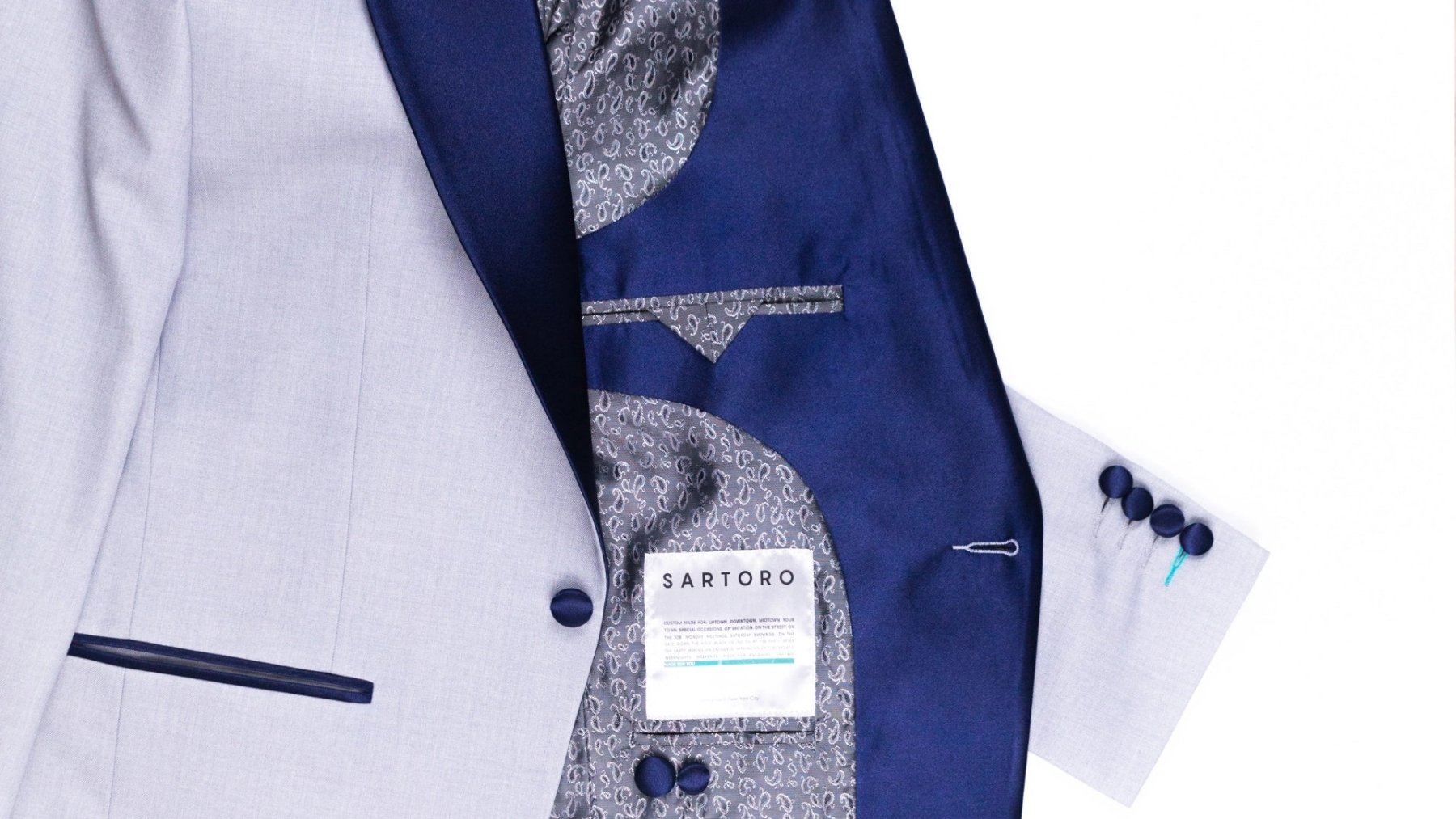
Suit Buttons Guide To Proper Fastening And Style
Contents
Key Takeaways
- Fit and Comfort are Key: Proper suit buttoning preserves your jacket's intended silhouette, preventing unsightly pulling and creasing and ensuring comfort and freedom of movement.
- Subtle Signals of Style: How you button your suit conveys attention to detail and an understanding of classic menswear, enhancing your overall look and projecting confidence.
- Rules Have Exceptions: While guidelines exist for most scenarios (e.g., always unbuttoning when sitting), modern style, comfort, and specific garment designs offer intentional opportunities to bend the rules for a more relaxed or unique aesthetic.
Decoding Suit Buttons: A Guide To Proper Fastening And Style
A great suit is all about the details, and buttons are one of those details that quietly set the tone. Fasten one wrong, and even the best tailoring can feel off. Get it right, and you look intentional, like the suit was built for you (because it was).
Suit button rules aren’t about rigid old-school etiquette; they’re about proportion, comfort, and the way your jacket moves with you. Whether it’s knowing why the bottom button stays undone or how to handle a double-breasted look without looking stiff, the right buttoning technique helps your suit do what it’s meant to do—elevate your presence without feeling forced.
At Sartoro, we design every suit with these principles in mind, so the fit feels as natural as the style looks. Here’s how to master the small detail that makes a big difference.
Suit Button Rules: Why They Matter More Than You Think
Suit buttoning may seem like a small detail, but it greatly impacts how a suit looks and feels. Fastening your jacket properly isn’t about following stiff, outdated etiquette; it's about making the most of your suit’s design and construction.
They Preserve The Shape Of Your Suit
A jacket is cut to drape a certain way when buttoned correctly. Fastening the wrong button or fastening all of them at once can pull the fabric out of shape, distort the lapel roll, and throw off the jacket’s natural silhouette.
They Improve Comfort And Movement
Suit button rules also exist for function. Leaving the bottom button undone on most jackets prevents restriction at the hips, letting the fabric move naturally and keeping you comfortable whether you’re standing, walking, or sitting.
They Show Attention To Detail
Knowing how to fasten a suit properly signals confidence and care. It’s a subtle way of saying you value craftsmanship and know how to wear tailoring as it’s meant to be worn.
They Enhance Your Overall Look
Even a perfectly tailored suit can look awkward when buttoned incorrectly. Following button rules ensures a clean line through your torso and a balanced appearance, letting your style speak without distraction—whether it’s a sharp navy blue suit or something more casual.
The Golden Rule For Single-Breasted Two-Button Jackets
Precision is the hallmark of timeless suiting, and nowhere is that more evident than with the universally popular single-breasted, two-button jacket. Knowing how to fasten these buttons isn’t merely etiquette—it's a subtle signal of taste and craftsmanship.
The Essential Buttoning Rule
Always fasten the top button, never the bottom. This classic principle—button one, leave one—helps the jacket drape properly across the torso, accentuating the V-shape and preserving both comfort and elegant movement. Leaving the bottom button undone also ensures the fabric moves naturally when seated or in motion, preventing unwanted pulling or distortion along the hem.
Why The Rule Matters
Beyond tradition, the single-button rule serves a practical function. Fastening both buttons can compromise the clean lines of the suit and restrict movement, while properly following the rule creates a sharp silhouette and exudes an air of effortless confidence. Proper buttoning instantly communicates an understanding of sartorial standards without saying a word.
When To Unbutton
Whenever sitting down, unfasten the jacket entirely to maintain the integrity of the tailoring and avoid undue strain on the fabric. On standing, simply refasten the top button—an easy ritual that underscores not only attention to detail but respect for the craft of fine tailoring.
Three-Button Jackets: How To Fasten Them Properly
Mastering the art of fastening a three-button suit jacket is essential to achieving a balanced silhouette and a polished impression. The rules around this style are rooted in sartorial tradition but offer discernible flexibility to accommodate modern preferences. Below, we explain how to approach each button for optimal effect.
Top Button: Sometimes
The top button on a three-button jacket is considered optional. Fastening it can create a slightly more formal, traditional look and is appropriate for taller frames when a higher roll lapel is desired. However, leaving it undone is equally acceptable, especially if you prefer a more relaxed, modern drape.
Middle Button: Always
The middle button is the anchor of a three-button jacket. You should always fasten this when standing, as it draws in the waist, provides structure, and ensures a harmonious fit across the chest. Unfastening the middle button is only recommended when seated to preserve the jacket’s shape.
Bottom Button: Never
The bottom button should remain undone. Fastening it disrupts the natural line of the jacket and restricts movement, an age-old guideline that still holds true today. Leaving it open lets the fabric fall as designed, maintaining comfort and elegance.
One-Button Jackets: Minimalism Meets Formal Style
The one-button jacket is a testament to streamlined elegance, a sharp deviation from tradition that brings modern minimalism to formalwear. Often favored for black-tie occasions and high-fashion settings, the single fastening offers a clean, uninterrupted canvas, allowing craftsmanship and premium fabric to command attention.
When To Wear A One-Button Jacket
One-button jackets are most commonly reserved for tuxedos and formal suits. Their succinct silhouette complements peak or shawl lapels, highlighting the chest and shoulders while elongating the overall appearance. This makes them ideal for slim, contemporary profiles and evening affairs where sophistication is demanded.
Proper Fastening: The Only Rule
Simplicity is the guiding principle. The golden rule with one-button jackets is to always fasten the button when standing and unfasten it when seated. This results in a crisp, tailored look that preserves the jacket’s line and prevents pulling or bunching at the waist.
Styling Notes For Distinction
A one-button jacket serves as a refined backdrop for personal expression. To underscore individuality, consider contrasting lapels, textured fabrics, or statement accessories. When choosing trousers and shirts, lean toward slim, tailored fits to complement the jacket’s minimalist structure, ensuring a cohesive and elevated ensemble.
Double-Breasted Jackets: Classic Structure, Modern Vibe
Elegance finds its architectural anchor in the double-breasted jacket. Characterized by its overlapping front flaps and parallel rows of buttons, this style projects an authority and sophistication rooted in tradition.
Yet today, innovative tailoring brings this iconic silhouette firmly into the realm of contemporary menswear. Understanding the nuances in suit button rules for double-breasted jackets empowers the modern gentleman to master both form and confidence.
Navigating The Button Rows
With double-breasted designs, you’ll typically encounter a six-button configuration—two vertical rows of three. The standard protocol: keep the inside (jigger) button fastened at all times to maintain structure, along with the corresponding outer button (typically the middle one in a six-button layout). The lowest button is never fastened. Meticulous adherence to this rule ensures a sharp, balanced look without puckering or restriction.
Standing And Sitting: Commanding Comfort
While standing, always keep your jacket buttoned. Before sitting, unfasten the outer button but leave the inside button secured. This preserves the jacket’s clean lines and prevents creasing, all while signaling your fluency in classic sartorial etiquette.
Modern Style Moves
Contemporary tailoring allows double-breasted jackets to feel less rigid and more expressive. Slimmer cuts, varied fabric choices, and optional peak or shawl lapels create opportunities for subtle personalization. Pair bold patterns or textures with understated shirts and ties to strike a confident balance, ideal for boardrooms or bold entrances alike.
How Suit Button Placement Affects Fit And Movement
While fabric and silhouette dictate a suit's overall elegance, the strategic placement of buttons is the subtle detail that influences comfort, shape, and the impression a wearer gives. Understanding the principles behind button placement helps unlock the full potential of any jacket, balancing tradition with personal style.
Button Stance And Jacket Proportion
The “button stance” refers to the vertical position of the top button on a single-breasted jacket or the functional buttons on a double-breasted jacket. A higher button stance creates the illusion of longer legs and a shorter torso, offering a more contemporary edge.
Conversely, a lower stance elongates the torso, lending a relaxed, classic appeal. The ideal placement harmonizes with a person’s natural proportions, ensuring a visually balanced, custom-fitted look.
Mobility And Ease Of Movement
Precision in button placement impacts more than style; it directly affects how a jacket moves with the body. Buttons positioned too high can restrict movement through the chest and shoulders, resulting in discomfort when sitting or reaching. If the jacket is set too low, it may disrupt clean lines and allow excess fabric to billow. Proper alignment, offset slightly above the natural waist, ensures elegant drape and freedom of motion.
The Silhouette And Lapel Roll
Button positioning uses lapel shape and length to define the jacket’s silhouette. On single-breasted styles, placement determines where the lapel rolls and the shape of the “V” opening. A carefully chosen position frames the chest, projects confidence, and allows easy layering over a fine-knit sweater or a crisp shirt.
Suit Button Rules: Sitting Down And Standing Up
Navigating the world of suit button rules is a subtle art that reflects an understanding of tradition and modern tailoring. When done right, these gestures project sophistication and effortless style. Below is a detailed breakdown of how your approach to buttoning should shift as you transition from standing to seated, ensuring your suit looks sharp and feels comfortable at all times.
When Standing: The Statement
The golden rule is to always fasten the top button (or the middle button on a three-button suit) when standing. This maintains a clean, structured silhouette and instantly elevates your presence. For two-button jackets, leave the bottom button undone; for three-button suits, you may occasionally fasten the top but never the bottom. Proper fastening highlights the suit’s tailored contours and elongates your frame, signifying attention to detail and personal style.
When Sitting: The Release
Before taking a seat, always unfasten your jacket buttons. This prevents fabric tension, creasing, or distortion of the suit’s drape. It ensures comfort and protects the precise tailoring, allowing the garment to conform naturally to your body’s movements. Unbuttoning is a small gesture, but one rooted deeply in menswear etiquette—demonstrating awareness and respect for both your suit and the occasion.
Moving With Intention
Transitioning between these two positions, buttoning up as you rise and unfastening as you sit, signals mindfulness and sartorial discipline. In professional and social settings, it conveys poise and a command of the unspoken language of classic menswear. Remember, these subtle cues mark the difference between simply wearing a suit and confidently owning your style.
When It’s Okay To Break Suit Button Rules
Suit button rules exist for a reason: They protect the shape of your jacket and keep your look balanced. But like any rule, there are moments when breaking it works in your favor. Style is about expression, and sometimes, that means bending tradition with intention.
Casual Or Relaxed Settings
When wearing an unstructured blazer or a suit designed for casual wear, leaving your jacket open (even when standing) can feel more natural. It projects confidence and ease, especially in creative or social environments.
Statement Pieces And Modern Cuts
Some suits are built to challenge tradition, think cropped jackets, asymmetric button placements, or fashion-forward double-breasted designs. These pieces are designed to be worn differently, and breaking button rules becomes part of the style. For those planning a special occasion, consider a wedding suit for men where subtle style variations can be explored.
Photography Or Movement
For photos, events, or moments when you’re moving, dancing, presenting, or performing, it’s often better to leave your jacket open or fasten it differently to maintain comfort and avoid pulling the fabric. Remember that Groomsmen suit options should prioritize style and comfort for lasting memories when outfitting your wedding party.
Personal Style Choices
Ultimately, rules are there to guide, not confine. If leaving both buttons undone feels right for your look, or buttoning all of them adds the edge you want, own it. Just make sure it’s intentional, not accidental. For warmer weather events, explore men's linen suits for weddings that offer comfort and a distinct style.
Final Thoughts
Mastering suit button etiquette isn’t just about tradition; it’s about achieving balance, movement, and confidence in your look. Whether it’s leaving the bottom button undone on a two-button jacket, knowing when to fasten a double-breasted suit, or embracing the clean lines of a one-button style, these small details make a significant impact.
Understanding when to follow the rules and break them allows you to express personal style while keeping your tailoring looking its best. With every Sartoro suit, these principles are built into the design, ensuring that you always look sharp, comfortable, and intentionally dressed. Remember, you can always explore our full range of high-quality suits for men to find your perfect fit.
Read also:
- What Makes A Suit? A Guide To Every Key Piece
- How To Wear And Style A Suit
- Suit Trends 2025: What's In And What's Out
Frequently Asked Questions About Decoding Suit Buttons: A Guide To Proper Fastening And Style
How many buttons are standard on a suit jacket?
Most classic suit jackets come with one, two, or three buttons. Two-button jackets are the most common and versatile, while one-button and three-button styles offer specific aesthetic choices for different occasions.
When should I fasten all the buttons on my suit?
You should rarely fasten all the buttons. For two- and three-button jackets, never button the bottom button; only the top (and sometimes the middle) button is closed when standing.
What is the "sometimes, always, never" rule?
This refers to three-button jackets: sometimes button the top, always button the middle, and never button the bottom.
Can I leave my suit jacket completely unbuttoned?
Yes, you can leave your jacket unbuttoned when sitting or for a more relaxed, modern look. It’s typically best to fasten according to the button rule for sharpness and structure when standing.
Why shouldn't I button the bottom button on a suit jacket?
Leaving the bottom button undone helps the jacket drape elegantly and move naturally with your body, preserving both comfort and silhouette—an enduring rule rooted in traditional tailoring.
Does the button rule apply to double-breasted suits?
Double-breasted jackets are the exception—they’re designed to be fully fastened, except sometimes for the bottom inner button, known as the “anchor,” which may remain undone based on personal preference and style.





















